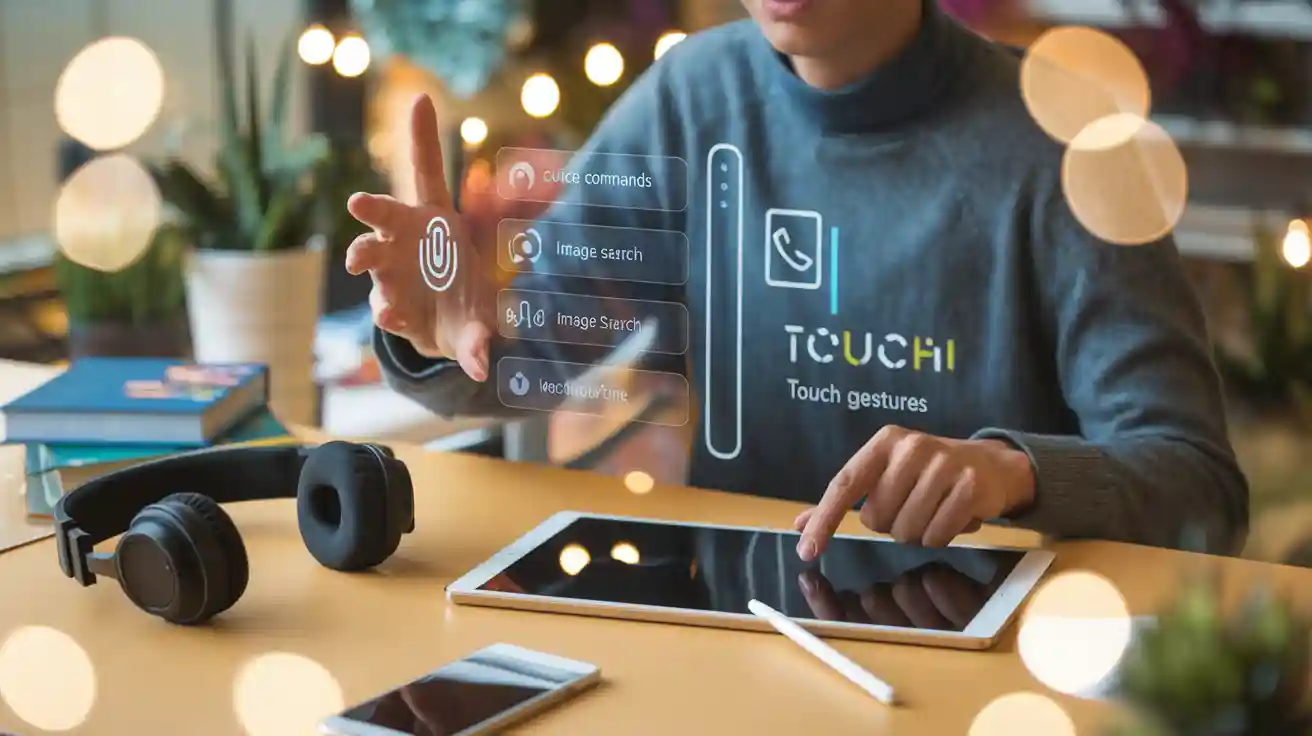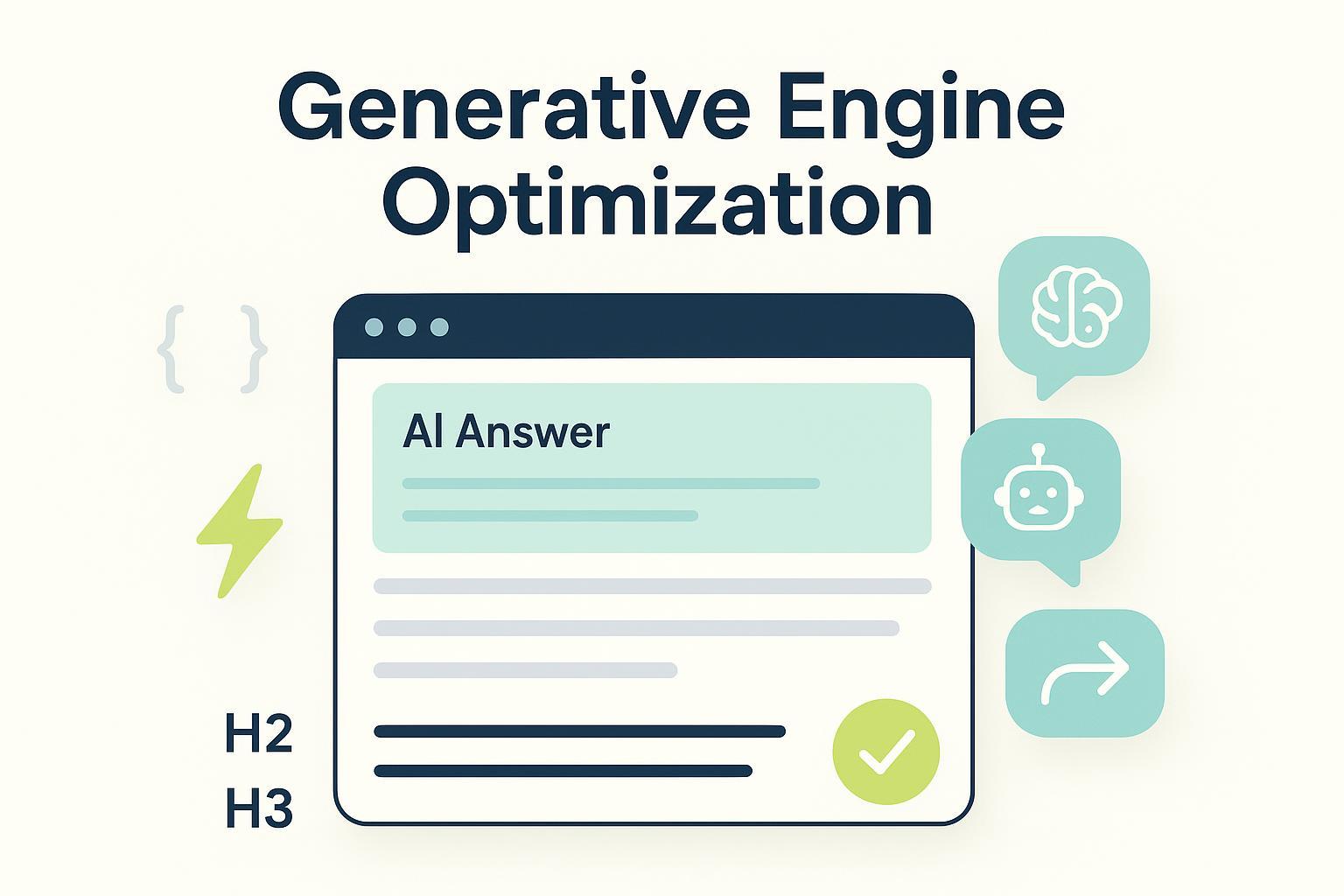Voice & Multimodal Search Simplified for Everyone
Voice & Multimodal Search combines voice, text, and images for smarter, faster results. Learn how it enhances accessibility, personalization, and business SEO.


Imagine asking your phone something and getting an answer right away. Or taking a picture of an item to see where to buy it. That’s the cool part of voice and multimodal search! Voice & multimodal search allows you to talk instead of type, and it mixes voice, text, and pictures to give you the best results. These tools make finding things quicker, simpler, and more enjoyable.
Why are they important? They help make technology easier for everyone. For example, voice & multimodal search assists people with disabilities in using devices without trouble. This technology improves your experience by utilizing your likes, past searches, and browsing habits. It’s like having a helper who knows exactly what you want!
Key Takeaways
Voice and multimodal search help you find things quickly. You can talk, show pictures, or type to get answers.
These tools are helpful for everyone, especially people with disabilities. They let users interact with technology in ways that work for them.
Businesses can use voice and multimodal search to improve content. This helps them reach more customers and be seen online.
Voice search is easy to use. You can search while cooking or driving, making it great for multitasking.
Multimodal search uses voice, text, and pictures for better answers. This gives you more accurate results by asking in different ways.
Voice Search Explained
How Voice Search Works
Voice search is like talking to your device. Instead of typing, you speak your question, and the system handles it. But how does it work? It starts with Automatic Speech Recognition (ASR), which listens to your voice and turns it into text. Then, Natural Language Processing (NLP) figures out what your words mean. These tools are so smart they understand accents, tones, and even slang.
Here’s why voice search is special:
Voice questions are longer and sound more like conversations.
People often ask direct things, like "What’s the weather today?"
Many use it for local searches, such as "Find a coffee shop near me."
Answers often come from featured snippets, giving quick, clear replies.
This technology has changed how we use devices. For example, people now shop, search, or control smart homes using voice commands. Businesses have adjusted too, making their content fit this voice-first way.
Statistic | Finding |
|---|---|
1 in 4 consumers | Visit a restaurant after a voice search result |
53% | Prefer using voice to search for menu information |
61% | Use voice search for directions to a restaurant |
Voice search isn’t just easy—it makes technology simpler for everyone.
Key Features of Voice Search
Voice search is unique because it makes life easier. Here are its key features:
Hands-Free Convenience: Search while cooking, driving, or doing other tasks.
Speed: Talking is faster than typing, so results come quicker.
Personalization: Voice assistants learn what you like and suggest things.
24/7 Availability: Your assistant is ready to help anytime, day or night.
Did you know over 50% of adults use voice search daily? Teens love it even more, with most using it every day. This trend is changing how people connect with brands and tech.
For businesses, voice search is important. Content must sound natural and match how people talk. Things like fast-loading sites and mobile-friendly designs also help give quick answers.
Everyday Applications of Voice Search
Voice search is now part of daily life, helping with many tasks. Here are some ways people use it:
At Home: Assistants can turn on lights, change the temperature, or play music.
On the Go: Need directions? Ask your phone. Want to call a place? Voice search helps.
Shopping: Add items to your cart or check out with voice commands.
Reminders and Alarms: Forgetting things is easier to avoid. Just ask your assistant.
This tech doesn’t just make life easier—it helps businesses too. Companies see 20% fewer customer service calls and lose fewer clients thanks to voice tools. Call wait times are shorter, and problems get solved faster.
Voice search is everywhere. It helps you find apps or book tables at restaurants. It’s a big win for users and businesses alike.
Multimodal Search Overview
How Multimodal Search Works
Multimodal search uses voice, text, and images together to help you. It’s like a smart tool that listens, sees, and reads at once. Instead of using just one input, it combines many to give better answers.
Here’s how it works:
Input Processing: You can talk, type, or upload a picture. The system takes this data and figures out your request.
Data Fusion: It mixes information from all inputs. For example, if you show a product photo and ask, “Where can I buy this?” it uses both the image and your voice to find the answer.
Context Understanding: Smart algorithms study your inputs to understand the situation. This makes sure the results are correct and helpful.
Scientists have created tools to make this process even smarter. For example:
Component | What It Does |
|---|---|
MPM Module | Learns user preferences across inputs and adjusts using focus tools. |
ISE Module | Finds links between details, using meaning-based structures for better answers. |
Findings | Tests show these tools are great at understanding users and avoiding confusion. |
These technologies work together to make searching easy and smooth.
Integrating Voice, Text, and Images
Imagine asking your phone, “What flower is this?” while showing it with your camera. That’s how combining voice, text, and images works. Multimodal search uses all these inputs to understand your question and give accurate answers.
Why does this matter?
Better Context: Mixing inputs is like how people understand things. For example, describing something and showing a picture makes it clearer.
Improved Accuracy: Using multiple inputs reduces mistakes. A voice command with a picture helps the system know exactly what you mean.
Personalized Responses: Multimodal AI can even notice your tone or expressions to give tailored replies.
Fun Fact: Chatbots that use both text and voice can understand how you sound. This makes talking to them feel more natural.
Tools like vision language models (VLMs) and text-to-speech (TTS) are important here. They combine pictures and sounds to make searching easier. For example:
Component | What It Does |
|---|---|
Integration | Uses VLMs and TTS to improve search accuracy and user experience. |
Audio Descriptions | Explains visual details for people who need sound-based help. |
Functionality | Looks at images, finds details, and turns them into speech for better access. |
This isn’t just about making things simple—it’s about making technology smarter and more human-like.
Practical Examples of Multimodal Search
Multimodal search is already helping in everyday life. Here are some examples:
Shopping: Take a picture of a product, say “Find this in size medium,” and get results fast.
Travel: Show a photo of a landmark and ask, “What’s the history of this place?”
Education: Students can ask questions with voice and show diagrams to get clear answers.
Healthcare: Doctors use multimodal tools to study patient data, combining notes, pictures, and voice recordings for better care.
In one study, researchers used videos and surveys to check teaching methods. Results showed mixing data types gives deeper insights. Another study found using multimodal data in hospitals improved machine learning, showing its value in important areas.
Multimodal search doesn’t just make life easier. It changes how we use technology, making it smarter and more helpful.
Benefits of Voice & Multimodal Search
Enhanced Convenience and Speed
Think about searching without using your hands. That’s what voice and multimodal search can do. These tools let you do many things at once. You can ask questions while cooking or driving, and your device gives answers right away. No need to type or stop what you’re doing.
Thanks to AI and NLP, voice search understands you better now. It works even if you have an accent or use casual words. This makes searching faster and easier, leaving users happier.
Fun Fact: Hands-free searches save time and help when you’re busy.
Accessibility for All Users
Voice & multimodal search isn’t just helpful—it’s for everyone. These tools make technology easier for people who struggle with regular searches. For example, people with disabilities can use voice or image searches to get what they need.
Why is this important?
16% of people worldwide have major disabilities, making these tools vital.
1 in 10 kids globally has disabilities, showing the need for inclusive tech.
NPR’s transcripts boosted search traffic by 6.86%, helping non-native speakers too.
By focusing on accessibility, companies can create tools that work for all users.
Improved Accuracy and Personalization
Ever feel like your voice assistant knows you well? That’s because voice and multimodal search learn from you. They study your habits, past searches, and how you ask questions to give better answers.
Here’s how it works:
Feature | What It Does |
|---|---|
Makes sure search results match what you want. | |
Voice Search Questions | Adjusts content based on how you ask things. |
User Stats | Uses data about you to make searches more personal. |
This personalization doesn’t just improve accuracy—it makes searches feel custom-made for you.
Business Benefits: Better Customer Connections and SEO Success
Voice & Multimodal Search isn’t just helpful for users—it’s great for businesses too. By improving your content for these tools, you can connect better with customers and boost your SEO. Let’s explain how.
When people use voice or multimodal search to find your business, they want fast and correct answers. Good experiences make them more engaged. For example:
Happy customer reviews make voice assistants trust your business more.
Reviews also help decide which businesses voice search suggests to users.
Metrics like bounce rate, time spent on your site, and conversions show how well your content works. If your site is ready for voice search, people will stay longer, explore more, and even buy things.
Now, let’s talk about SEO. Did you know improving search tools can help your online presence? Here’s what the numbers show:
Metric | Benefit |
|---|---|
Stronger brand position in search results. | |
Landing Page Match | |
PPC Ad Quality | Higher scores from improved SEO strategies. |
Cost Per Click (CPC) | Lower costs due to better landing pages. |
By using SEO plans made for voice and multimodal search, you can make your brand more visible and save on ads. It’s a win-win!
So, what’s the key point? Getting ready for Voice & Multimodal Search helps you connect with customers and improve your marketing. Start using these tools and watch your business grow!
Adopting Voice & Multimodal Search
Tips for Individuals: Using Voice Assistants and Multimodal Tools
Voice assistants and multimodal tools make tasks simpler and faster. You can use them for shopping, finding places, or controlling smart devices.
Here are some easy ways to start:
Try Features: Test commands like setting alarms or playing songs. Ask your assistant to find restaurants or give directions.
Mix Inputs: Use voice, pictures, and text together. For example, snap a product photo and ask where to buy it.
Update Devices: Keep your gadgets updated for new features like better recommendations or language options.
Did you know most people love voice search because it’s quick? About 71% prefer it for speed, and 58% use it to find local shops. Voice shopping is also growing fast and could reach $164 billion by 2025.
Tips for Businesses: Optimizing Content and Platforms
Businesses can grow by using Voice & Multimodal Search. Here’s how to get started:
Focus Locally: Make sure your business details are correct. This helps assistants suggest your services.
Write Naturally: Use simple, conversational language. Answer common questions clearly to appear in voice searches.
Mobile-Friendly Sites: Ensure your website is fast and works well on phones.
Add Markup: Use structured data so search engines understand your site better.
Businesses can also try voice shopping and ads to connect with customers. These methods improve SEO and customer satisfaction.
Recommended Tools and Technologies
To use Voice & Multimodal Search, you need the right tools. Here are some popular ones:
Amazon Echo with Alexa: A top smart speaker for voice tasks.
Apple’s Siri and Google Assistant: Popular assistants that work on many devices.
Voice Commerce Platforms: Tools like Shopify Voice help businesses add voice shopping.
Voice tech is becoming essential. Over half of homes may have digital assistants soon. Now is the time to start using these tools.
Future Trends in Voice & Multimodal Search
AI and Machine Learning Innovations
AI and machine learning are changing how we use technology. These updates make voice assistants smarter and easier to use. For example, Natural Language Processing (NLP) helps voice AI understand feelings, context, and even slang. This means your assistant can reply like a real person.
Here’s what’s new with AI:
Voice AI now works in many languages and uses visuals for better results.
Over 8 billion voice assistants are used worldwide, with 60% of phone users relying on them often.
Edge computing makes voice apps faster and safer by reducing delays.
Machine learning also makes tools more personal. Your assistant learns your habits, knows your voice, and guesses what you might need. These changes make Voice & Multimodal Search quicker, smarter, and easier to use.
Integration with Smart Devices and IoT
Imagine controlling your home with your voice or hand movements. That’s what happens when multimodal search connects with smart devices and IoT. These systems let you manage your surroundings in cool and easy ways.
Here’s how it works:
Feature | What It Does |
|---|---|
System Design | Links IoT gadgets, robots, and multimodal tools in places like hospitals. |
Ways to Interact | Uses voice, gestures, eye movement, and AR for control. |
Personal Settings | Lets you change things like lights and room temperature easily. |
Remote Monitoring | Helps caregivers check safety and comfort from far away. |
These tools are being tested and getting good reviews, especially from people with disabilities. Whether it’s setting the heat or checking your health, IoT and multimodal search make life easier and safer.
Multimodal Search in AR and VR
AR (Augmented Reality) and VR (Virtual Reality) are making multimodal search even better. These tools aren’t just for fun—they help people live better lives. For example, AR and VR help older adults stay active and connected by improving their physical and mental health.
In healthcare, AR and VR are used for therapy and recovery. Imagine a doctor using VR goggles to study patient info while using voice and visuals together. This mix of tools makes hard tasks easier and more effective.
Customization is important here. AR and VR are being designed to fit each person’s needs. This means everyone—from kids to seniors—can benefit. As these tools improve, they’ll change how we search, learn, and interact with the world.
Voice & Multimodal Search is changing how we use technology. It mixes voice, text, and pictures to make searching easier and faster. You can ask questions, show photos, or type, and it adjusts to your needs.
The advantages are big. You can talk naturally with search tools, get better help for disabilities, and finish tasks quicker. Here's a quick look:
Benefit Type | What It Does |
|---|---|
Better User Interaction | Lets people talk to search tools like having a chat. |
Help for Disabilities | Uses sounds and pictures to give helpful answers for everyone. |
Faster Work | AI handles simple tasks and helps people work together better. |
Easier Communication | AI understands context, helping those with hearing or vision issues find information. |
Smarter Tech Use | Combines voice and visuals to make using devices more fun and useful. |
These tools don’t just help—they change everything. They make life simpler and give businesses new ways to connect with people. Why not try them out? See how they can make your life smarter and easier.
FAQ
What makes voice search different from multimodal search?
Voice search lets you ask questions by speaking. Multimodal search uses voice, text, and pictures together. It gives more ways to explain what you need.
Can voice search understand accents?
Yes! Voice search uses smart AI to recognize accents and slang. You don’t need to speak perfectly—it’s made to understand you.
How does multimodal search help with shopping?
Take a picture of an item, describe it, or ask about it. Multimodal search combines these to find the product or similar ones. It’s like having a shopping helper.
Is voice search safe?
Yes! Voice search keeps your data safe with encryption. Update your device settings for extra security.
What devices work with multimodal search?
Many phones, smart speakers, and apps support it. Tools like Google Lens and Alexa mix voice, text, and pictures for smarter searches.
See Also
Strategies for Excelling in AI Search Optimization by 2025
Understanding AI Search: Its Functionality and Purpose
Best Practices for Enhancing Multilingual GEO on AI Platforms
Five Sectors Thriving with the Power of Generative Search
Is AI Overview the Future of Search Beyond Traditional Links?





